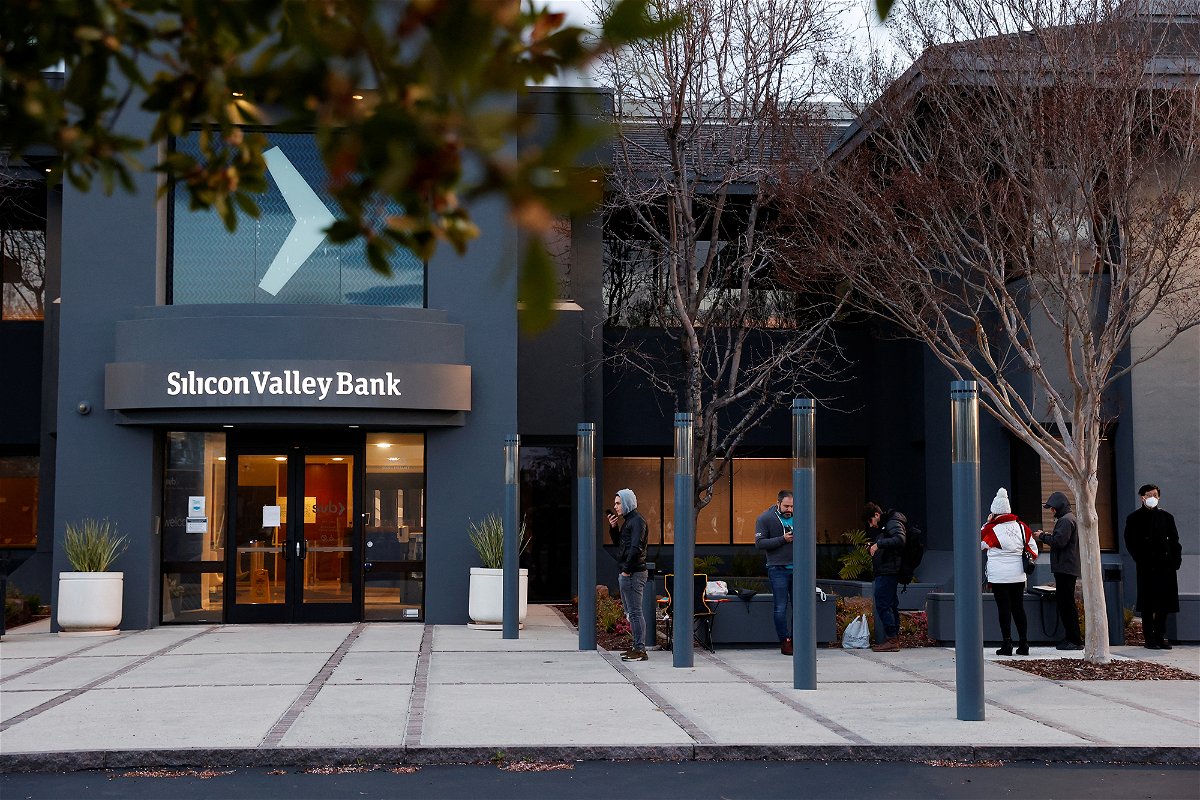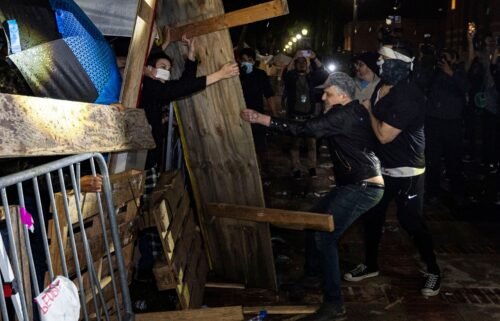Banks ‘aren’t out of the woods’ after the collapse of SVB and Signature

Custumers lineup outside of the Silicon Valley Bank headquarters in Santa Clara
By Elisabeth Buchwald, CNN
A month ago, code blue sirens went off at banks across the globe after the collapse of Silicon Valley Bank and Signature Bank. As banks work to put that painful episode in the rear view mirror, it’s unclear if the situation has stabilized or if it’s the calm before another storm.
More details will come on Friday, when the Federal Reserve is set to release the findings of its investigation into what led to SVB’s collapse.
For now, looking at banks’ deposits may lead you to believe that banks are in better shape than they are, but they “are not out of the woods just yet,” said Ana Arsov, managing director at Moody’s.
After the collapse of SVB and Signature Bank, record levels of deposits poured into Bank of America, JPMorgan Chase and Citibank from mid-size and regional banks.
First Republic Bank reported that its total deposits fell 41% in the first quarter, to $104.5 billion. But deposit activity has been stable since the end of March, the bank’s CEO Michael Roffler said on an earnings call Monday.
That’s the case across US banks both large and small, according to Federal Reserve banking data.
As of April 21, total deposits at First Republic, including the $30 billion infusion it received from large banks, stood at $102.7 billion, down 1.7% from the end of March. The minor decline “reflects seasonal client tax payments,” Roffler said.
Fed rate hikes will continue to test banks
The Federal Reserve’s yearlong rate-hiking campaign, aimed at taming inflation, partly accelerated the banking crisis. The Fed raises interest rates by selling assets, namely Treasury bills. When it does so, the price of bonds tends to fall while yields rise.
SVB ran into trouble because too many of its customers’ funds were locked into bonds. That became a problem when depositors — mostly startups and other tech companies — needed to withdraw more money as other sources of funding dried up. To meet their withdrawal requests, SVB had to sell bonds at an almost $2 billion loss.
Even though many banks are also heavily invested in bonds, SVB was “in many respects very much an outlier,” said Christopher Wolfe, head of North American banks at Fitch Ratings. Its customer base wasn’t diversified enough, a majority of their deposits were uninsured and the bank was overly invested in long-term Treasuries. Taken together, it left the bank more vulnerable to rate hikes than many of its competitors, said Wolfe.
Many banks and their depositors breathed a big sigh of relief after the government announced it would back deposits above the Federal Deposit Insurance Corporation’s $250,000 limit. That subdued some of the panic that ensued from SVB’s collapse.
But many banks are struggling to regain the deposits they lost from the SVB fallout in addition to what they continue to lose as more Americans tap into their savings to afford the higher cost of living. And the Fed’s likely rate hikes at its upcoming meetings will lead to more deposit outflows, said Wolfe.
“Night follows day, that’s going to have an impact,” he said. But it’s not clear if that will ultimately translate into more bank failures.
Regional banks are still reeling
Last week, Moody’s Investors Service downgraded 11 regional banks, an unusual action move for the rating agency to do at once, said Arsov.
The downgrades, which hit lenders including First Republic Bank, US Bancorp, Western Alliance and Zions Bancorp, predominantly stemmed from asset-liability management issues, exposure to the hard-hit commercial real estate sector and declining capital levels, she said.
But to rebuild their capital, these banks will need to pay higher interest rates to lure in more deposits. That will put a cap on how much capital they can raise since it will eat into profitability, Arsov said.
“It doesn’t mean that there’s going to be a flight of deposits akin to what we saw in Silicon Valley, but it still makes these banks more vulnerable to shocks going forward,” she told CNN.
In contrast, larger banks, are well capitalized and are being properly managed to withstand the pressure that comes with rate hikes and other shocks, she said.
The-CNN-Wire
™ & © 2023 Cable News Network, Inc., a Warner Bros. Discovery Company. All rights reserved.



